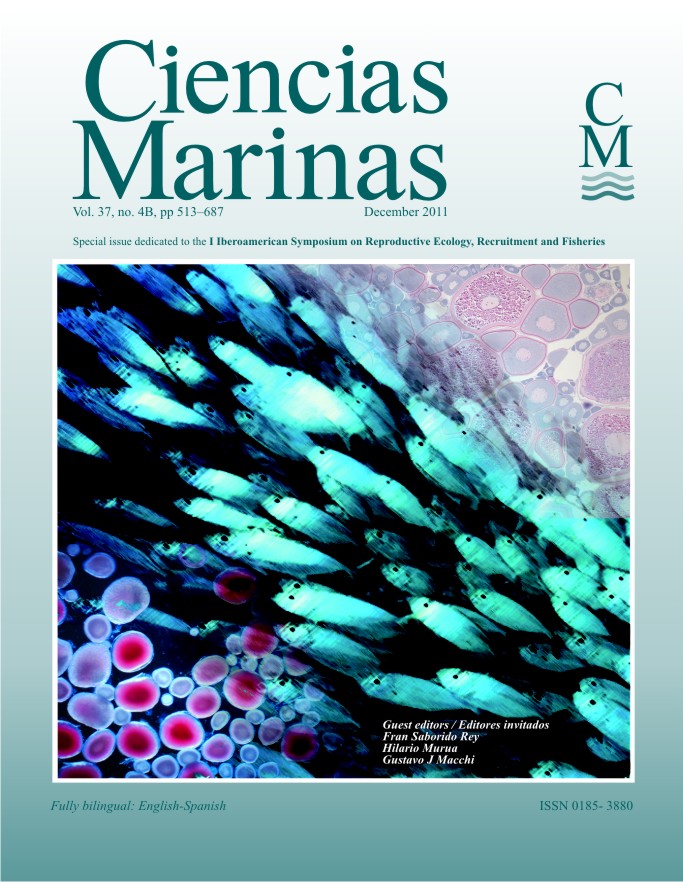Study of the relationship between total egg production, female spawning stock biomass, and recruitment of Flemish Cap cod (Gadus morhua)
Main Article Content
Abstract
In stock-recruitment relationships, spawning stock biomass (SSB) has traditionally been assumed to be equivalent to total egg production (TEP); however, in the last decade a number of studies have indicated the need to include more biological complexity in measures of reproductive potential and advocate the use of TEP instead of SSB. The relationship between fecundity and length is often used to estimate TEP. In that case, the equations used to estimate female spawning stock biomass (FSSB) and TEP only differ in the coefficients determining the fecundity and weight relationships with length. In the present paper, TEP and FSSB have been estimated for Flemish Cap cod (Gadus morhua) for the period from 1978 to 2008. Total egg production was calculated using six different fecundity-length relationships applied to the whole time series in each case. A greater difference between the allometric coefficient in the weight-length and fecundity-length relationships led to a lower correlation between FSSB and TEP. The TEP time series using higher fecundity allometric coefficients explained a greater proportion of recruitment variance. Despite this pattern, correlation between FSSB and TEP was always higher than 0.96. These results support the necessity of making annual estimates of potential fecundity and studying its relation not only to length but to other variables, such as fish condition, in order to really get an improvement of TEP over FSSB as a predictive variable in recruitment assessments.
Downloads
Article Details
This is an open access article distributed under a Creative Commons Attribution 4.0 License, which allows you to share and adapt the work, as long as you give appropriate credit to the original author(s) and the source, provide a link to the Creative Commons license, and indicate if changes were made. Figures, tables and other elements in the article are included in the article’s CC BY 4.0 license, unless otherwise indicated. The journal title is protected by copyrights and not subject to this license. Full license deed can be viewed here.

